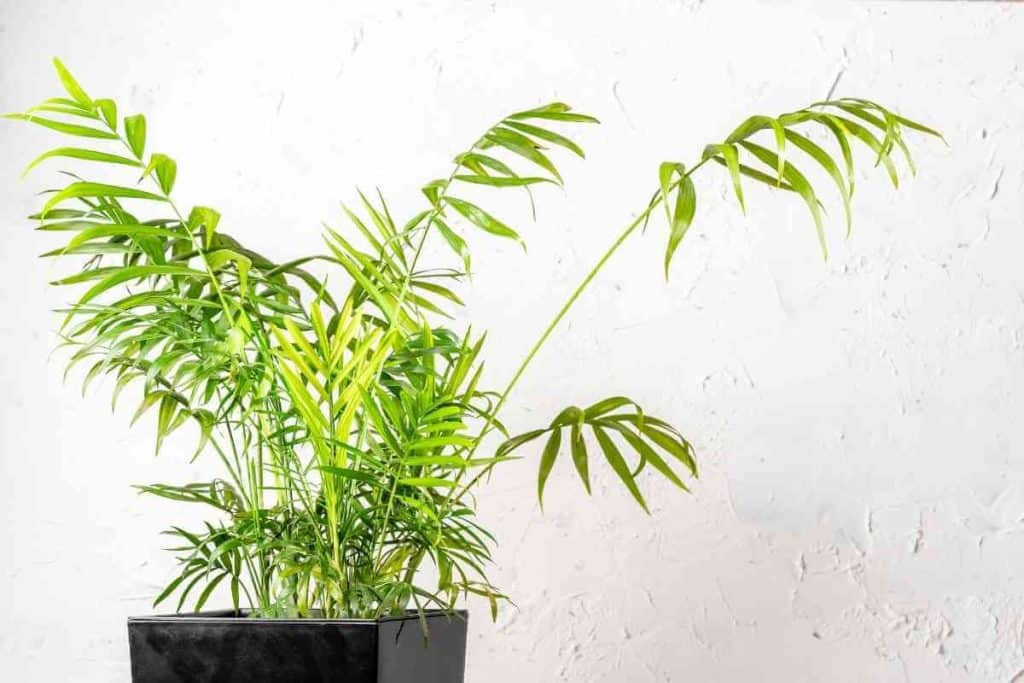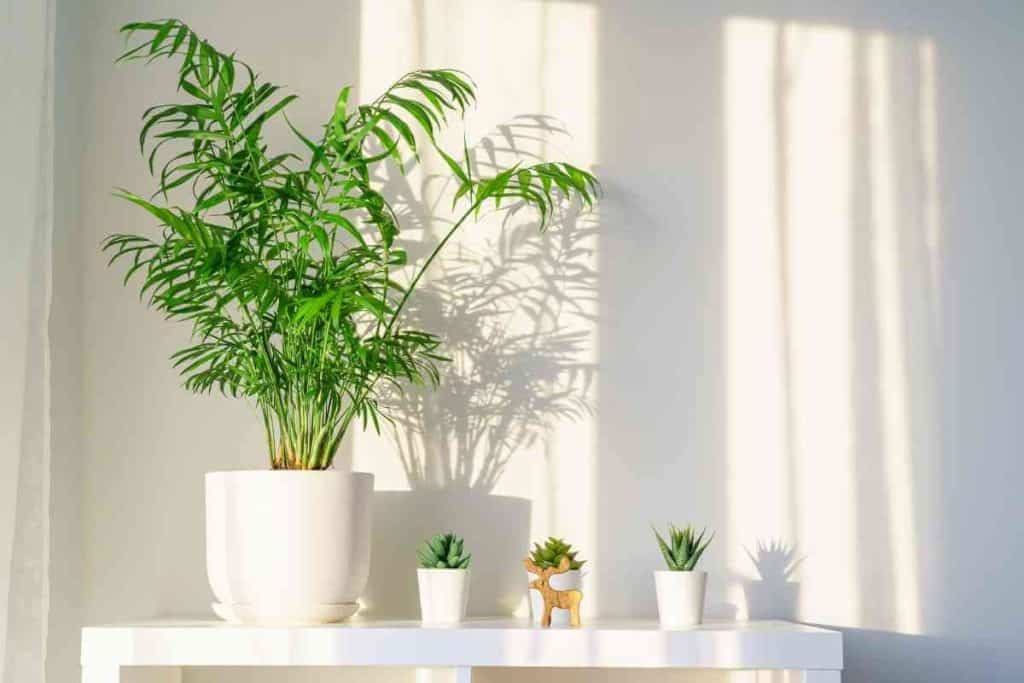Because of its nature, most people often mistake a cat palm for a palm tree. But despite their striking similarities, a cat palm is certainly a plant and is grown as one. It features bunches of large, bold, green leaves, thus giving its environs a tropical feel.
They are very lovely plants to grow indoors. However, they are quite tricky to grow and need a lot of attention to stay healthy.
Some people fail to give them the right care they require, so their plant suffers different negative conditions, especially the browning of leaves. But why are cat palm leaves turning brown?
Many things can make your cat's palm leaves start turning brown, such as underwatering, overwatering, excess salt, repotting, dry air in the room, etc.
This article will explain why cat palm leaves are turning brown and the possible solutions to them.
Table of Contents
What Is a Cat Palm?
Botanically called Chamaedorea cataractarum, the cat palm is a tropical plant that has its origin in the forests of Central America, where it grows on river banks. It is popularly known as Cascade Palms or Cataract Palms, and though it is a slow-grower, still, it can grow as tall as 6ft.
In harsher weather conditions, it is grown as a houseplant and is usually taken outside during the summer to decorate terraces and patios. Cat palm is a plant that is often associated with social status.
In other words, it is a popular plant that you can see in most rich homes, especially in their windows, where it is eye-catching to everyone.
The plant is quite tricky to care for because of its tropical requirements. However, it takes only the knowledgeable and determined to achieve great success with it.
Cascade palm features many trunks that could be clumped, forked, or maybe a little horizontal and just 1 inch wide.
It features amazing 40inch long fronds that possess 30-50 leaflets of 12 inches long and 1inch wide. The plant thrives under sheltered conditions and needs more water.
Though it is prone to several kinds of diseases and pests, the most critical problems it has stemmed from environmental conditions and physiological challenges.
Why Are Cat Palm Leaves Turning Brown?

It is important to know how to take care of your cat palm, as proper care and maintenance will give you the healthy version you’ve always dreamt about. Cat palms do not thrive under direct light; a shaded position with a little filtered light is okay.
Most importantly, avoid overwatering as it will not only cause the leaves to fall off, it’ll also affect its leaves and turn them to brown or yellow color.
In this case, high humidity is not required because the water tends to evaporate, thereby increasing the plant’s humidity. They do not require frequent repotting.
Here is a brief highlight of the common causes of the cat palm leaves turning brown:
1. Overwatering
This is one of the most common causes of the browning of cut palm leaves. Like most other houseplants, cat palm thrives in a dry climate outdoors.
Therefore, you must imitate its jungle environment by ensuring that you do not overwater, as it will not only cause its leaves to turn brown, it’ll also cause them to fall off.
2. Underwatering
Just like overwatering, if your cat palm plant lacks water, it will cause its leaves to turn brown.
Therefore, in as much as it doesn’t like frequent watering, it doesn’t mean you should starve it of water completely. You can water it at least once in two weeks.
3. Dry Air in the Room
In its tropical jungle, the cat palm enjoys an airy atmosphere; therefore, you must provide it with these conditions to avoid causing its leaves to turn dry.
In other words, when the air around your plant in your home is excessively dry, it causes its leaves to turn brown.
4. Repotting
It is not entirely bad to repot the cat palm plant, but it must not be too frequent. However, another possible cause of browning of its leaves is when you recently repot.
This will cause the whole palm to look pale or unhealthy for around six weeks or thereabouts before its recovery.
5. Excessive Salt
This problem is a bit rare, but it can cause the browning of leaves. When there’s a high content of salt in your water, it will affect the cat palm plant, including the browning of leaves.
How to Stop Cat Palm Leaves From Browning

The browning of cat palm leaves can be addressed if you apply the necessary steps that will enable it to stay healthy and happy, thus:
1. Watering Conditions
Make sure you don’t under-water or overwater your cat palm, and this can be controlled by allowing the soil surface to dry to the touch before watering again. And make sure you keep watering until water begins to come out from underneath the pot.
2. Dry Air Conditions
What should you do if the air is dry? You can save the dry air situations around your cat palm by misting the leaves every other day. If you’re planted in a heated area of your room, you can use a humidifier to help increase its air humidity.
3. Repotting Conditions
Avoid repotting your cat palm frequently. Be patient for a while to allow it to be completely root bound before you repot, as it doesn’t like to be stressed or disturbed. Repotting is done once in three years by picking a fresh, bigger pot or dividing your plant.
4. Salting Conditions
Try to find any whitish substance in the soil around the cat palm, a sign of harsh salt in hard tap water, as well as another significant cause of cat palm leaves turning brown.
If found, leach out the salts by drenching the soil until water drops from underneath the pot. Do not as many times as possible. You can also address this issue by using only distilled water.
Related Posts:
- 13 Types Of Palm Trees In Florida
- How To Revive a Dying Palm Tree
- How To Stop A Palm Tree From Growing Taller
- 21 Different Types Of Palm Trees
- If You Cut A Palm Tree in Half Will It Grow Back?




